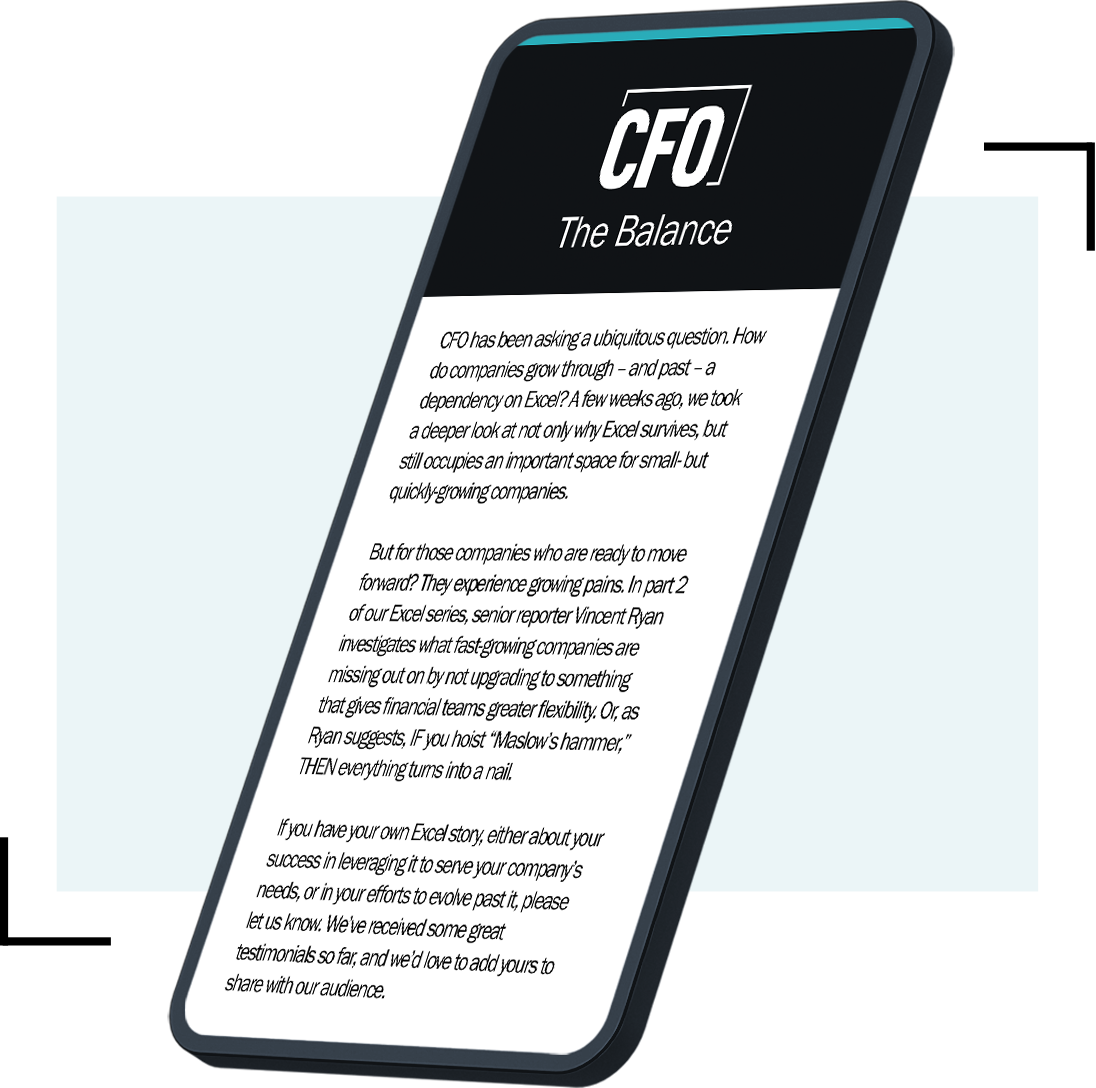Corporate Finance
-
Return to office trends, PCE data, and Lacework’s CFO: Trial Balance
This week, we look forward to critical readings on economic growth and inflation.
By CFO Editorial Staff • April 22, 2024 -
Private debt funds rise 13.3% YoY in 2023, surpasses VC fundraising
“2023 was a great test for private debt, and it passed with flying colors.”
By David McCann • April 18, 2024 -
 Explore the Trendline➔
Explore the Trendline➔
 Dragon Claws via Getty Images
Dragon Claws via Getty Images Trendline
TrendlineThe Power of FP&A: A CFO's Essential Tool for Growth
If a CFO wants to grow amid the current economic headwinds, paying attention to FP&A and the talent that drives it is a must.
By CFO staff -
34% of CFOs ‘very optimistic’ about US economy: Report
Despite overall optimism, finance chiefs consider cost optimization a top focus area.
By David McCann • April 17, 2024 -
Q1 corporate bankruptcies up 43% over last year
U.S. bankruptcy filings through March 31 increased year over year across all major filing categories.
By David McCann • April 16, 2024 -
NYSE President Lynn Martin talks IPOs; CFOs tackle cannabis accounting: Trial Balance
IPOs have raised 3.5 times the amount raised a year before.
By CFO Editorial Staff • April 15, 2024 -
Small Business Optimism Hits 11-Year Low: NFIB Report
Small business optimism dips as inflation concerns remain.
By Adam Zaki • April 10, 2024 -
Opinion
The Post-IPO Checklist: 7 Insights for CFOs
The more CFOs know about life after going public, the better.
By Moira Conlon • April 9, 2024 -
45% of Execs Say Economic Conditions Better Than 6 Months Ago: Report
Forty-five percent of executives said global economic conditions were better than they had been six months earlier.
By David McCann • April 9, 2024 -
Jamie Dimon’s Annual Shareholder Letter, CFO Compensation Data, and More: Trial Balance
JPMorgan Chase CEO Jamie Dimon said artificial intelligence is one of the most potentially transformative inventions of the past several hundred years.
By CFO Editorial Staff • April 8, 2024 -
Autodesk to Audit Financial Practices, Delay Annual Report
The construction technology giant said it doesn’t believe the investigated areas will affect any previously issued financial statements or its most recent earnings release.
By Matthew Thibault • April 8, 2024 -

 Retrieved from Wikimedia Commons.
Retrieved from Wikimedia Commons.
South Carolina’s $1.8B ‘Mystery Fund’ Likely a Result of Communication Breakdown
After coming across $1.8 billion of unaccounted-for cash, South Carolina’s state comptroller is questioning the treasurer’s practices, while the treasurer is blaming poor communication on behalf of the comptroller.
By Adam Zaki • April 2, 2024 -
March Jobs Report, Moloco’s CFO, and Management Accounting: Trial Balance
Updates on the U.S. labor market highlight the first week of the new quarter.
By CFO Editorial Staff • April 1, 2024 -
CFO Optimism Rises in Q1: Duke/Fed Report
Fifty-three percent of finance chiefs said they’ve either slowed hiring, not filled openings, or laid off employees due to automation, according to the latest Duke-Fed CFO survey.
By Adam Zaki • March 27, 2024 -
M&A Pros Confident Deals Will Surge
But while there should be significantly more transactions this year, the size of deals likely will lag somewhat behind that surge.
By David McCann • March 27, 2024 -
AI Accounting Startup Raises $100M, PCE Reading, and Housing Data: Trial Balance
This week we look ahead to the Friday release of the personal consumption expenditures index — the Fed's preferred measure of inflation.
By CFO Editorial Staff • March 25, 2024 -
Sponsored by GoCardless
Do you know how much it costs your business to receive every dollar?
It’s time to talk about the real cost of getting paid–and why businesses across the United States are needlessly losing out every time they receive money.
By Lewis Turek, General Manager, North America, GoCardless • March 25, 2024 -
San Francisco 49ers, MLB Star Shohei Ohtani Wrestle With Poor Financial Controls
A failure to maintain and implement proper accounting controls impacted some of the world’s most successful athletes and professional sports organizations this week.
By Adam Zaki • March 23, 2024 -
Nvidia CEO on AI, Three Big Tech IPOs, FOMC Meeting: Trial Balance
A new installment of the Peer Audit series asks CFOs about effective digital communications.
By CFO Editorial Staff • March 18, 2024 -
Women Founders Raised 23% of All US VC Money in 2023
All-female-founded companies did less well, raising $3.2 billion from VCs last year, a single-digit percentage of total U.S. activity.
By Vincent Ryan • March 13, 2024 -
42% of FP&A Employees Say Company Pays for Upskilling: Report
Nearly 78% of respondents said their employers have trained them on technology and data and just under half (45%) reported receiving training on business knowledge.
By Adam Zaki • March 13, 2024 -
New York Stock Exchange Moves to Delist Apparel Retailer Express
Concerns about the company’s long-term financial health have continued to surface over the last year.
By Nate Delesline III • March 12, 2024 -
CPI Data, Reddit Sets IPO Terms, and Apex’s CFO: Trial Balance
Economists are projecting little change in February’s CPI numbers.
By CFO Editorial Staff • March 11, 2024 -
US Payrolls Grow 275K, But Unemployment Rises to 3.9%
“This is music to investors’ and the Fed’s ears — the labor market and inflation are cooling but not at a recessionary level,” said Michael Arone of State Street Global Advisors.
By Vincent Ryan • March 8, 2024 -
Futures Pricing Implies 42% Chance of Two Rate Cuts by July
“If the economy evolves broadly as expected, it will likely be appropriate to begin dialing back policy restraint at some point this year,” said Jerome Powell.
By Vincent Ryan • March 6, 2024 -
ESG Reports Make Middling Progress
“The goal of sustainability disclosure must be information, including the process to prepare it, that is on par with financial reports.”
By David McCann • March 6, 2024

























